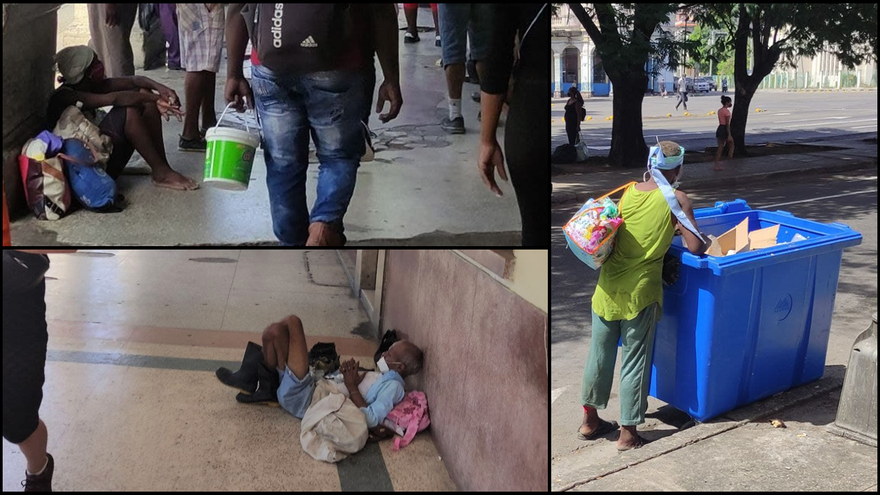
![]() 14ymedio, Juan Diego Rodríguez, Havana, August 29, 2021 — The most invisible victims of the collapse of the national economy are the homeless. Although beggars have always been part of the usual landscape on the streets of Havana, their presence in doorways, parks, plazas and vacant lots has grown in recent times, and their survival has become more difficult every day.
14ymedio, Juan Diego Rodríguez, Havana, August 29, 2021 — The most invisible victims of the collapse of the national economy are the homeless. Although beggars have always been part of the usual landscape on the streets of Havana, their presence in doorways, parks, plazas and vacant lots has grown in recent times, and their survival has become more difficult every day.
“It’s difficult for us to care for these people who are assigned to our medical post. Many are elderly who don’t have relatives, nor receive care from any parallel institution and, in reality, what they need is to be admitted in-house for better care of their health,” Yaneysi Ríos, a doctor at a medical office in the capital, tells 14ymedio.
Most of the beggars are usually older adults or people with a mental illness, who lost their homes and families. They are concentrated in Old Havana, Plaza de la Revolución, and Centro Habana, places where they have become accustomed to wandering in search of some coins, which they most often find among the tourists. If a few years ago it was most common to see them sitting in doorways waiting for some money, now they can be seen rummaging through garbage cans in search of food scraps.
The authorities are most likely to remember them when some VIP or international leader passes through the streets with his caravan of vehicles, or when a major event is held. But with mobility restrictions due to the covid-19 pandemic, many of these activities have decreased.
Havanans still remember the visit of Barack Obama in 2016, when brigades from the Ministry of Public Health proceeded to intern the city’s beggars in healthcare facilities to remove them from the public thoroughfares.
With Pope Francis’s first visit to the island in 2015, the retouchings of façades and the relocations of the homeless were so intense along the road that the procession would follow from the airport, that people ironically renamed the route the “Via Sacra” (Italian for “sacred way”).
During the decades from the 60s to the 80s, the so-called “lazy law” was in force in Cuba, which penalized those who neither studied nor worked. Citizens who were prosecuted for this crime were forced to accept a job, generally in agricultural work, street cleaning, and other occupations that the majority rejected because it was hard work for low pay.
With the arrival of the crisis of the 90s and the appearance of a budding private sector, the State could no longer guarantee a job for each person of working age and the legislation was repealed. Which is the reason, according to officialdom, that homelessness on the streets has increased.
Translated by Tomás A.
____________
COLLABORATE WITH OUR WORK: The 14ymedio team is committed to practicing serious journalism that reflects Cuba’s reality in all its depth. Thank you for joining us on this long journey. We invite you to continue supporting us by becoming a member of 14ymedio now. Together we can continue transforming journalism in Cuba.
